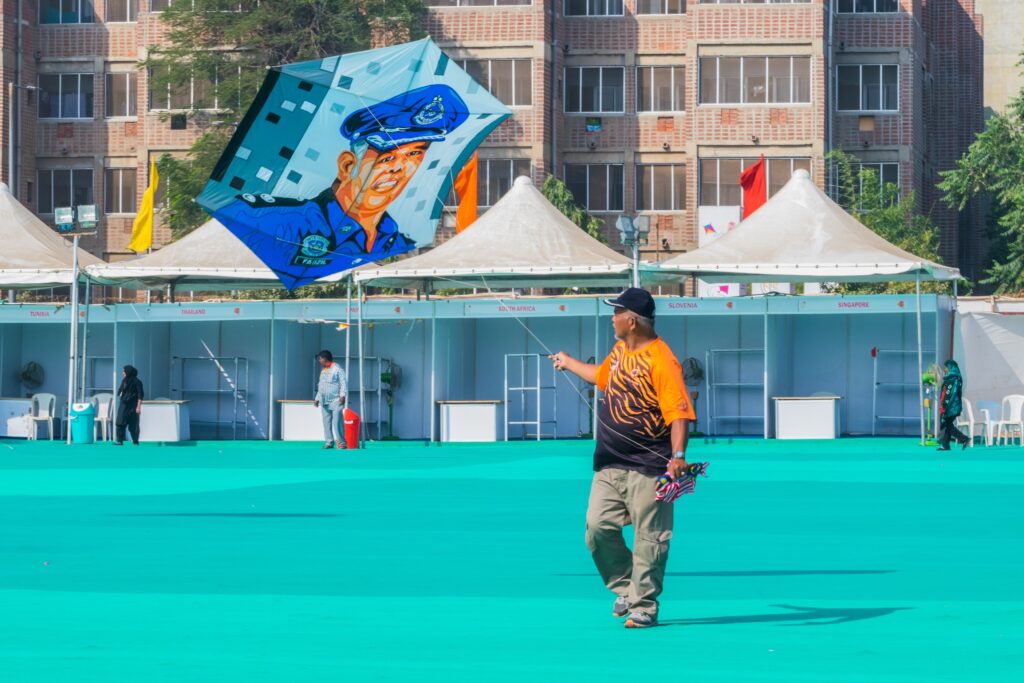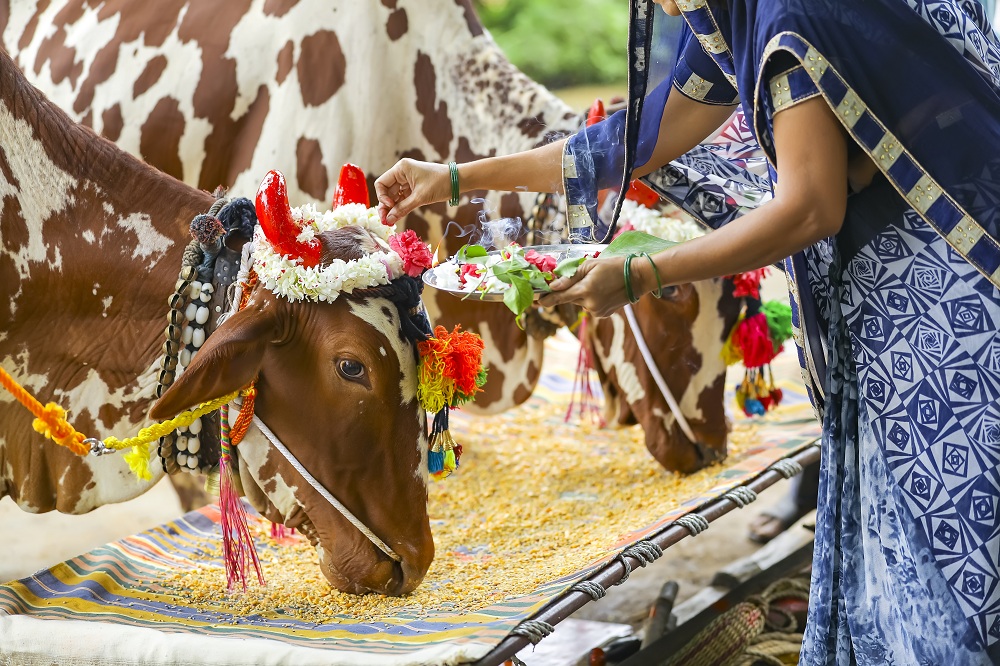India is an agricultural economy, and harvesting accounts for the majority of the country’s wealth. Harvest season is a festive period for farming households, who take this occasion to pay gratitude to Mother Earth in different ways. This is marked by numerous celebrations and rituals, making it one of the most-awaited festivals across the world.
Every year, on January 14, the Indian Subcontinent celebrates its harvest festival. It is observed on January 15 during leap years. Though the festival is called by different names in different states of India, it is widely known as “Makar Sankranti” or “Uttarayan”, and it is one of the major festivals that people in India look forward to.
The harvest festival is celebrated with great joy and enthusiasm in many countries worldwide, just like India. However, their names and the time of celebration may differ. For example, the harvest festival is called Thanksgiving (USA), Moon Festival (China), Bali Rice Harvest (Indonesia), Sukkot (Israel), Lammas Festival (UK) and Madeira Flower Festival (Portugal).
According to Manoj Singh, author of the book “Sanatan Dharma,” Makar Sankranti – the harvest festival is celebrated as “Paush Sankranti” in Bangladesh, Pongal or Uzhavar Tirunal in Sri Lanka and Maghe Sankranti in Nepal.
In the following article, Gharpedia shares an overview of this festival. Also, the word “ghar” means house/home and the website provides information on everything related to houses.
What is Makar Sankranti?
Makar Sankranti, as previously stated, is a harvest festival. In India, harvesting activities (reaping of harvested crops) begin on this day. In addition, the Sun moves northward on this day, signalling the start of longer days and spring. As a result, Makar Sankranti is also known as ‘Uttarayan’ (Uttra = North). Another reason for calling it “Uttarayan,” according to J Mohapatra’s book “Wellness In Indian Festivals and Rituals,” is that on this day, the Sun travels from the tropic of Cancer (Karkat) to the tropic of Capricorn (Makar) by entering the Makar Rasi (Zodiac) and proceeds towards the equator in its journey toward North called ‘Uttarayan/Uttarain’.
While most Hindu festivals have no fixed date, the Makar Sankranti harvest festival is the only one that does, and this is because the festival follows the solar calendar, which is based on the earth’s orbit around the Sun.
Makar Sankranti Festival Theme At Your Home
The Makar Sankranti celebration does not have any hard and fast rules, nor does it necessitate any special house preparations. Nonetheless, we have included some décor for the festival to elevate your experience and make you feel festive.
To begin, make a rangoli of any geometrical shape or experiment with a harvest theme. It could be a couple cutting crops or a heap of harvested grains. As it is an auspicious day, place a toran (door embellishment hung to invite prosperity and abundance) at your main entrance. Make a simple toran with Ashoka or mango leaves and marigold flowers (optional), or pick a ready-made, store-bought one.

Prepare traditional sweets and place them in the living room, surrounded by crop husks, to give harvest vibes. Donations have a special meaning on this day, so stock up on some extra grains and give them to the poor or needy who visit your home. As winter has officially ended, switch from dark and warm fabrics to light and bright fabrics for your interiors and soft furnishings. Fill your vase with dried panicles.

How to Celebrate Makar Sankranti Festival?
Makar Sankranti is celebrated in various ways, both regionally and globally. Every Indian state and its people have their own set of rituals, which are detailed below. However, in India, a few rituals are common, such as bathing in holy waters, worshipping the Sun and preparing and relishing sweets with sesame and jaggery as the main ingredients.
Sankranti Celebrations in Different States of India
The states of Punjab and Haryana celebrate Makar Sankranti as ‘Lohri’ and ‘Maghi’ respectively. They celebrate this festival of harvest on the 13th of January. On Lohri night, people wear bright-coloured clothes, light bonfires, dance to the beats of bhangra (traditional Punjabi dance), eat sesame and jaggery sweets and last but not least, pray for abundance in their produce.

In Gujarat, Makar Sankranti is celebrated on January 14. ‘Kite flying’ is the hallmark of this festival. People start their day by worshipping the Sun and then engage in kite-flying activities for almost the entire day. The kite flying of Gujarat is famous globally, and an ‘International Kite Festival’ is held in Ahmedabad every year that is worth watching. Undhiyu (mixed vegetables) Puri is the most popular delicacy for the day.

In Tamil Nadu, Makar Sankranti is known as Pongal. It is observed for four days,: Bhogi Pandigai, Thai Pongal, Maattu Pongal, and Kaanum Pongal. On Bhogi pandigai old things are discarded. On Thai Pongal sweet delicacies, including Pongal (rice cooked in fresh milk and sweetened with jaggery), are prepared and offered to the Sun. Cattle are fed and worshipped on Maattu Pongal, and people meet and greet their relatives on Kaanum Pongal.

For more details on Pongal check out the below article
Similarly, Andhra Pradesh celebrates the festival of Makar Sankranti for four days,: Bhogi Pandunga, Pedda Pandunga, Kanuma and Mukkanuma. On the first day, they burn old clothes on a bonfire. On the second day, they meet and feast with loved ones and decorate the house entrance with muggu (rangoli), on the third day, people worship farm animals and show their gratitude towards them. Finally, on the last day, people praise rain, soil and fire, which are necessary for the cultivation of crops.

In Karnataka, the festival is called “Suggi,” and on this day, farmers decorate their cows and bulls with colourful costumes as a mark of respect for farm animals.

People in Bihar and Jharkhand start their day by taking a holy dip in rivers and ponds. Then they relish sweets called ‘tilgud’ (sesame and jaggery). They eat khichdi (vegetables, lentils and rice) and ‘chokha’ (roasted vegetables).

In West Bengal, it is called Poush Sankranti because it falls in the Bengali month of Poush. A variety of traditional Bengali sweets are made from rice flour, coconut, milk and date palm jaggery. People also consider it holy to bathe in Ganga Sagar on this day.
Makar Sankranti festival is called ‘Magh Bihu’ in Assam. People celebrate Magh Bihu by preparing a feast and eating it in a bamboo hut, which is set on fire the next day. They perform traditional Assamese dance and participate in games such as buffalo fighting and Tekeli Bhonga.

People in Odisha call it ‘Makara Sankranti’ and on this day, a tradition called ‘Makara Basiba’ is observed in honour of friendship, and a friendship knot is tied. People prepare the famous ‘Makara Chaula’ pudding, made from uncooked newly harvested rice, banana, coconut, jaggery, sesame, Rasagola, Khai and chenna.

Moving on to other countries, it is known as “Maghe Sankranti” in Nepal. People begin their day by bathing in sacred waters and then worshipping the Sun. On this day, the entire family gathers to feast. tilaura, chakku, ghee, spinach and yam curry are common items on the menu. It marks the new year for the Tharu people of the western Tarai district, and they celebrate it for a week.
Paush Sankranti, as it is known in Bangladesh, is celebrated by flying kites. Fireworks are held at night, and flame-eaters entertain people with their skills and talents.
Sri Lanka calls it Pongal or Ulavar Thirunaal. It is also known as the “First Rice Festival,” and it is celebrated by Sri Lankans for over two days. On the first day, they cook rice pudding and offer it to the Sun, and on the second day, they worship the cattle by washing and garlanding them.
Overall, Makar Sankranti – the harvest festival in India – marks the start of spring, which is considered auspicious and is celebrated with zeal. So participate in the festivities and have a great time.
Also, as spring begins, if you want to give your home a colourful makeover, click on the link below.
House Makeover Ideas to Make Your House Colourful
Spruce Your Home Up in Time for the Summer!



